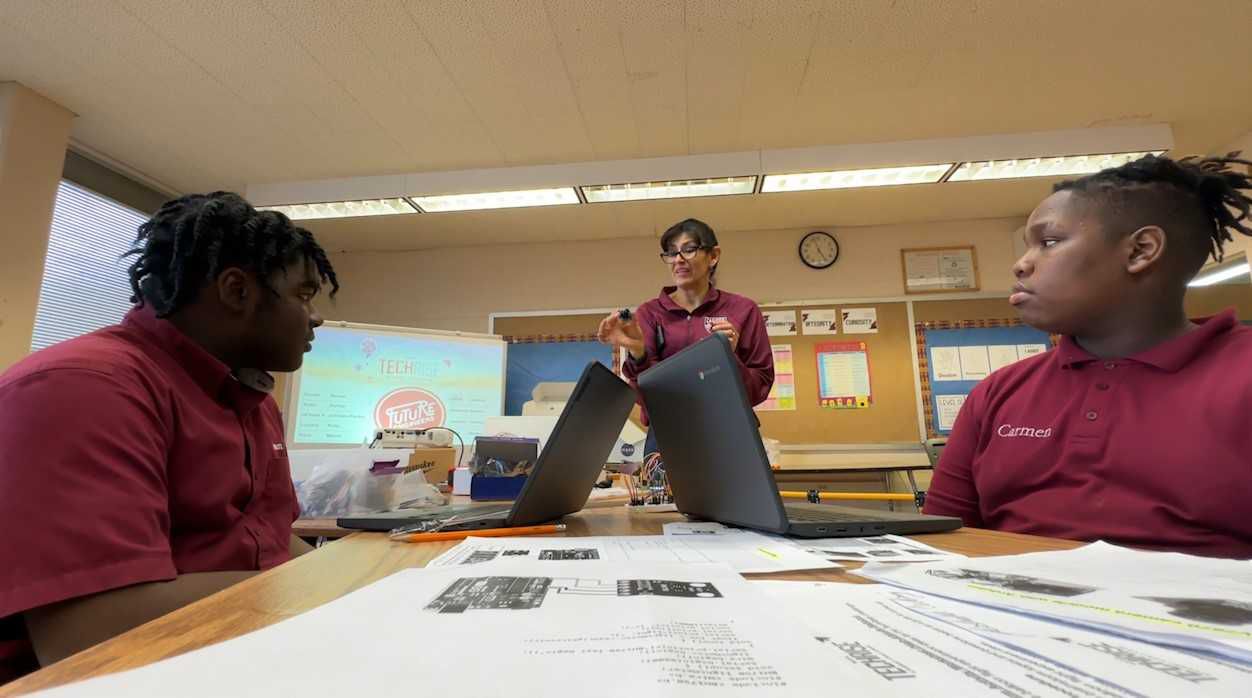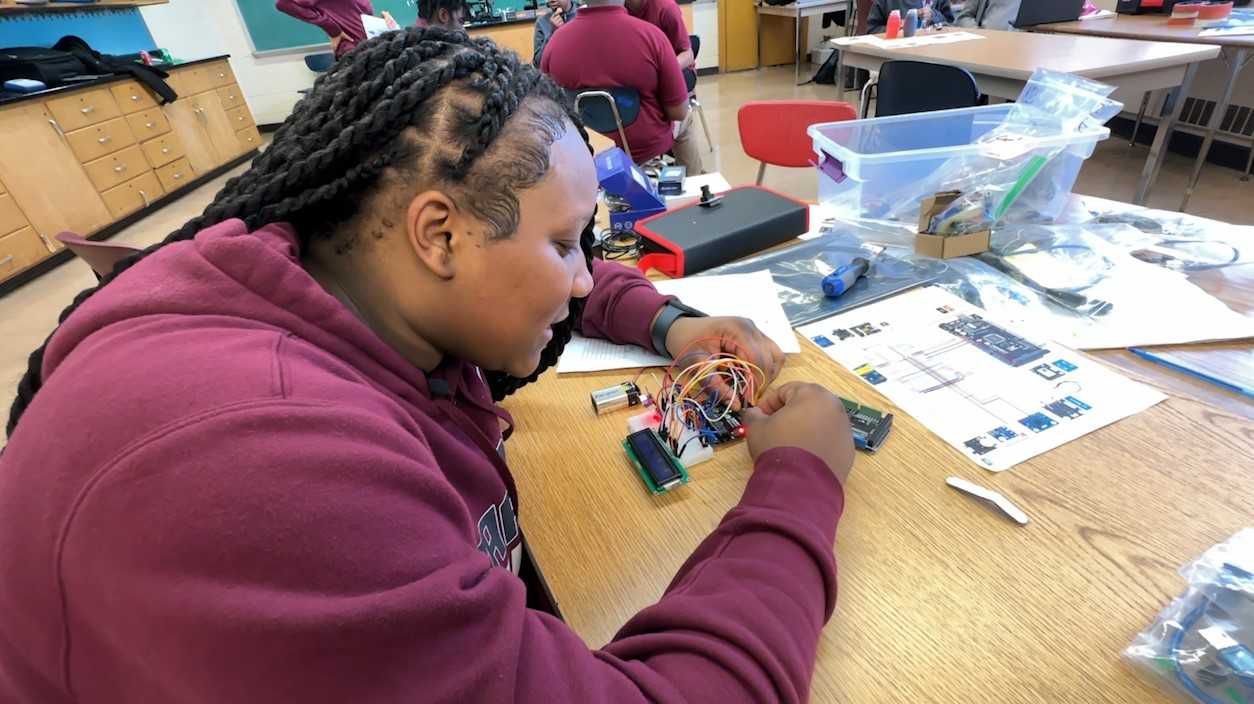MILWAUKEE — An eighth-grade class at Carmen Schools of Science and Technology Northwest Campus in Milwaukee is building a device that will be launched into space by the National Aeronautics and Space Administration (NASA).
Under the direction of their teacher, Isabel Mendiola, the students entered a national student challenge called NASA-Tech Rise. Their proposal for a science experiment to be done inside a high-altitude balloon in space won that challenge.
They are the only students in the state to represent Wisconsin in this program. Since winning, they have received supplies from NASA to begin building the parts for their experiment.
“I can see the excitement,” said Mendiola, who teaches science and robotics. “I can see how they are growing, not only in the science classroom but also in robotics.”
Mendiola is more than a teacher to her class. She’s a mentor who has been able to instill her passion for science, coding, and engineering in her students.

For the past few weeks, they have been working as a team to build sensors that will go in the high-altitude balloon to gauge things like temperature and carbon monoxide levels in space. They will collect and observe the data as a greater lesson about weather, the atmosphere and climate change.
“This is a pretty big opportunity,” said Jamal Johnson, one of the students working on the project. “It’s kind of shocking. But I think with what a good team I have here, I can get through this.”
Johnson said science and engineering weren’t always on his radar, but now he’s thinking about making a career out of them.
“I never really thought or knew what I wanted to be,” said Johnson. “But I picked up robotics, and it’s really fun. I might be an engineer, maybe.”
Many students now have similar dreams and aspirations.
“Working any type of way with NASA has always been a dream of mine,” said Lundon Ruby, as she did problem-solving on a computer for the project.

In addition to building confidence and future goals, the students shared that they have also built a strong bond. They said they feel more like family, working together to accomplish the challenging tasks in front of them.
“It brings people together,” said student Ja’Veah Johnton-Purifoym. “Just having the same passion for robotics, mechanics and engineering. Everyone here is like family to me.”
Mendiola said watching her students light up as they work on this project is special.
“I know that they have so many opportunities, and this is the right way to start,” she said.
The group has a few more months of work to do. They will send what they create to NASA, and it will be launched into space in the high-altitude balloon on May 17.



